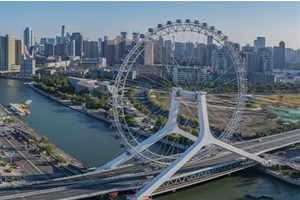Luzhou xuyong county tourist attractions
The tourist attractions in Xuyong are: Chunqiu Ancestral hall, xuyong county, Luzhou, Cliff Statue in Qingliangdong, Huagongxi Nature Reserve, Yufu Ancient Street, and the Eastern Han Tomb Group in Xuyong.
1. Chunqiu Ancestral hall, xuyong county, Luzhou
Chunqiu Ancestral hall, also known as Chunqiuchi and Spring and Autumn Pavilion, is located in Yandian Street, xuyong county County, Sichuan Province. Mainly dedicated to Guan Yu, because it is said that Guan Yu likes to read The Biography of Zuo Family in the Spring and Autumn Period, hence the name Chunqiu Ancestral hall. Also called "Shaanxi Guild Hall". It was built in the 26th year of Guangxu in Qing Dynasty (1900). At that time, the building area was 4,500 square meters, and now the preserved building area is 2,500 square meters.
2, cool cave cliff statue
The cliff statue of Qingliang Cave in Xuyong is located in Pingqing Village, Maling Town. It is scattered on the red sandstone cliff wall of a natural semi-circular cave with a length of 50 meters, a width of four or five meters and a distance of 1 meter from the surface.
3. Huagaoxi Nature Reserve
Huagaoxi National Nature Reserve is located in Shuiwei Town, about 44 kilometers north of Xuyong County, Sichuan Province. It borders Chishui City, Guizhou Province and Gulin County, Sichuan Province in the east and north, with a total area of 238.27 square kilometers. It belongs to the transitional zone between the northern edge of Guizhou Mountain in Yunnan-Guizhou Plateau and the low hills in the middle of Sichuan Basin.
4. Yufu Ancient Street
With the antique style buildings in southern Sichuan as the main body and the business culture of Yanma Ancient Road in Ming and Qing Dynasties as the theme, it integrates the elements of Xuyong celebrity culture, inn culture, folk culture, border trade caravan culture and modern leisure culture.
5. The Eastern Han Dynasty Rock Tombs in Xuyong
There are 25 tombs distributed on the cliff at the foot of the tail of Qingshan Rock. The tombs of the tombs are arranged horizontally to the northeast, all of which are single caves. The specifications of the tombs are similar. The tombs are all arc-shaped and chiseled like scales. Some tombs are engraved with reliefs such as vertebral heads, animal faces, fish and horses.
Reference to the above content: Baidu Encyclopedia-xuyong county
The postcode of xuyong county, Luzhou City, Sichuan Province is 646400.
Xuyong county, located in the southeast of Sichuan Province, China, is under the jurisdiction of Luzhou City, which is a county under its jurisdiction. It is located in the transition zone between Yunnan-Guizhou Plateau and Sichuan Basin, with unique geographical environment, diverse landform types, including mountains, hills, river valleys and plains, and rich natural landscapes. Xuyong county's climate belongs to subtropical humid monsoon climate, with four distinct seasons and abundant rainfall.
Xuyong county has a long history and profound cultural heritage. Known in ancient times as "the land of barbarians", it has been an important node of the ancient tea-horse road since ancient times, and the "Xuyong Salt Horse Road" in history is famous far and wide. There are many historical and cultural heritages in the territory, such as the red tourist attractions such as the "old site of Xuyong Conference" on the way of the Red Army's Long March, as well as natural landscapes such as Shihaidong Township and Tiantai Mountain.
Economically, xuyong county is dominated by agriculture, and its special agricultural products, such as Xuyong black-bone chicken, coptis root and tea, enjoy high reputation. At the same time, industrial development is also growing, especially in coal, electricity, building materials and other industries with a certain scale.
Xuyong county people are hardworking, simple and hospitable. In recent years, with the continuous improvement of infrastructure, tourism, agricultural sightseeing, ecological leisure and other industries have developed rapidly and become a bright pearl in southern Sichuan.






